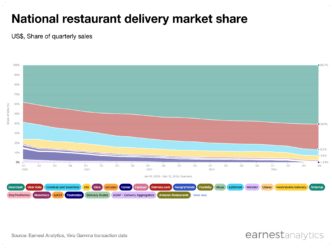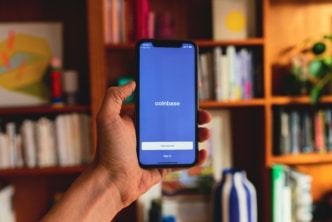COVID’s Long-Term Impact Almost Zero for Most Non-Subscription Retailers
Recorded January 12, 2023.
Emory University’s Daniel McCarthy and Columbia PhD candidate Shin Oblander share their findings on the long-term impacts of Covid using Age-Period-Cohort modeling powered by Earnest Analytics transaction data.
Daniel McCarthy on the long-term impact of Covid: “In a surprisingly large number of these categories, the [Covid] lift went away… The new normal is basically the old normal in most of the categories. The subscription categories were an interesting exception. When we focus on Meal Kits and Gym categories, the effects are still surprisingly significant. Meal Kits were up 27% after the immediate onset of Covid, and they’re up even more as of June 2022… So those gains have really stuck.”
Daniel McCarthy on subscription services: “It was all the non-subscription categories that saw the gains of 94% to 128%. The subscription firms went up a lot less than that… It’s kind of intuitive that you’re going to panic buy toilet paper, you’re not going to panic subscribe to Blue Apron… In the Gym category… revenue has been stubbornly negative at about -30%, and again I think that’s because people have begun finding alternatives to the Gym. The fact that it’s a subscription seems to be playing a role to the persistency of the negative lift in their case. At-Home Fitness is kind of a hybrid category. Before Covid, Peloton was getting something on the order of 75% of its revenue from the hardware sale… so they do have a subscription, but you could think of them as non-subscription businesses that require a subscription. I think the decline in hardware sales, which is non subscription as we have been seeing, has been pulling down the lift as of June of 2022. If we were to focus on this theme just of subscription payments we would see results much like what we see for Meal Kits. There is more persistency in the subscription payments. I think this is in part because you’re getting that thing or doing that activity and getting that bill every week month, and it could be suggestive of habituation. People are forming stronger habits around that activity than they would around those other discretionary categories.”
Daniel McCarthy on durable goods sales: “As of June 2022, spending in the Online Furniture category is 50% lower than we would have expected had there been no Covid. This is also being driven by the fact that the product is a durable good. So if you bought that couch and set up that work-from-home desk in your basement, you probably don’t need to buy a desk. So a lot of what people were buying at the beginning of Covid was leading to a pull-forward of demand that led to people not needing that stuff.”
Daniel McCarthy on Covid’s impact on online vs in-store sales: “We have seen a lot of transience to the effects. In some sense it is kind of good for the in-store goods who got hammered, and bad news for the online businesses that had potentially been investing significantly to satisfy peak Covid level demand that may not manifest itself for quite some time in the future.”
Shin Oblander on Age-Period-Cohort modeling: “This type of Age-Period-Cohort model… has been used a little bit in marketing in a demographic sense where cohort represents birth cohort. This is the first time we have seen this kind of methodological lens applied to modeling customer relationships. What we observe is that overnight there is about a doubling [of Restaurant Delivery], a 130% increase in sales in May of 2020. This effect deteriorates over time, but not in a straight line… What’s interesting is that as of about February of last year, this effect is within the margin of error of Zero. The long term effect we infer is actually quite small and not statistically significant.”
Shin Oblander on customer growth during Covid: “We can decompose this effect of sales into a few different component behaviors. We can have the number of active customers, how frequently those active customers are placing orders, and how big of orders they are placing. A lot of this growth was being driven in the growth of active customers, but that growth has entirely gone away, in fact that growth is a little below baseline. The effect of how often people make orders and how large of orders they make have been more consistent over time, but with a smaller boost… Across categories the most of the effect is coming from differences in active customers, with smaller effects of purchase frequency and purchase size.”
For press inquiries please reach out to [email protected].
For additional information on how Earnest Analytics data can power your decision-making, please request a demo.











